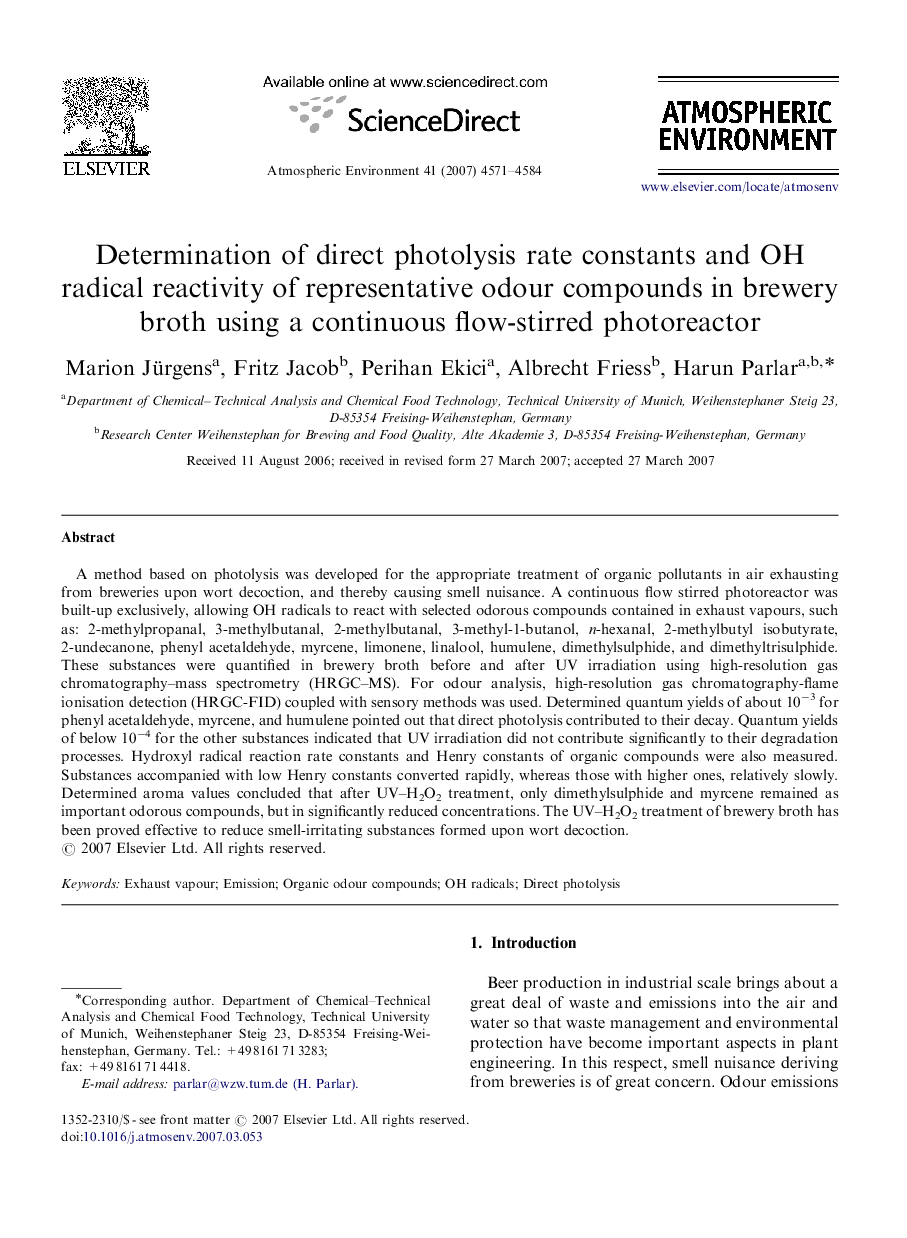| Article ID | Journal | Published Year | Pages | File Type |
|---|---|---|---|---|
| 4443526 | Atmospheric Environment | 2007 | 14 Pages |
A method based on photolysis was developed for the appropriate treatment of organic pollutants in air exhausting from breweries upon wort decoction, and thereby causing smell nuisance. A continuous flow stirred photoreactor was built-up exclusively, allowing OH radicals to react with selected odorous compounds contained in exhaust vapours, such as: 2-methylpropanal, 3-methylbutanal, 2-methylbutanal, 3-methyl-1-butanol, n-hexanal, 2-methylbutyl isobutyrate, 2-undecanone, phenyl acetaldehyde, myrcene, limonene, linalool, humulene, dimethylsulphide, and dimethyltrisulphide. These substances were quantified in brewery broth before and after UV irradiation using high-resolution gas chromatography–mass spectrometry (HRGC–MS). For odour analysis, high-resolution gas chromatography-flame ionisation detection (HRGC-FID) coupled with sensory methods was used. Determined quantum yields of about 10−3 for phenyl acetaldehyde, myrcene, and humulene pointed out that direct photolysis contributed to their decay. Quantum yields of below 10−4 for the other substances indicated that UV irradiation did not contribute significantly to their degradation processes. Hydroxyl radical reaction rate constants and Henry constants of organic compounds were also measured. Substances accompanied with low Henry constants converted rapidly, whereas those with higher ones, relatively slowly. Determined aroma values concluded that after UV–H2O2 treatment, only dimethylsulphide and myrcene remained as important odorous compounds, but in significantly reduced concentrations. The UV–H2O2 treatment of brewery broth has been proved effective to reduce smell-irritating substances formed upon wort decoction.
